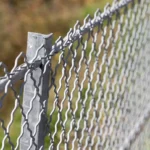Are Solid Soap Bars An Answer to the Waste Problem?
Be it liquid or solid, everyone has regular interaction with soaps. Thanks to the quest for clear skin, today, we have an extensive variety of cleansers and facial soaps. And who can forget the endless selection of shower gels and hand wash?
However, it seems that solid soap bars are gearing up to dominate the market once again. According to the research published by Kantar Worldpanel’s, the sales of barred soap have witnessed an increase of three per cent from September 2017 to 2018. Many are of the view that this increase in the sales of solid soap bars is because of increased awareness of plastic waste. It is pressurizing manufacturers to embrace sustainable custom soapboxes and other materials.
As a matter of fact, brands too have realized they need to push more eco-friendly and zero waste products. For example, leading brands like Chanel and Jo Malone have introduced new ranges of solid bars and bath soaps. This makes allowance for the abrupt change in buying habits as well as an increase in the sales of the solid soaps.
How Switching to Solid Soap Bars can help Reduce our Environmental Impact?
Generally, when you evaluate consumer decisions regarding how eco-friendly they are, it gets pretty annoying. In short, you rarely get the right answer. Much depends on the particular product you’re looking to purchase. For instance, where it was manufactured, how it was delivered, and how it was enclosed. To cut the long story short, it’s not that easy as you think. However, when you talk about soap, things are pretty much in black and white.
The foremost thing is the packaging. Switching to solid soap bars is on the cards because it’s the easy way to reduce plastic waste, and quite rightly so. These soap bars either come in loose packing or recyclable cardboard boxes, which favours environment-friendly strategies. In contrast, liquid soaps are enclosed in plastic bottles that don’t decompose even after decades.
Also, the plastic bottles are way heavier than the solid soap bars, owing to increased water content. As a result, it’s less easy to move them around. Plus, they take more space during transportation, which greatly increases your overall cost. They also consume more energy during production as you need up to five times more energy to produce liquid soaps than a barred soap bar.
Plastic bottles and pouches also prove costly as compared to eco-friendly custom soap box packaging. For example, cardboard or Kraft materials used to carve soapboxes are inexpensive and widely available across the globe. On top of it, packaging firms like The Legacy Printing can deliver high-quality sustainable custom printed soap boxes at unbeatable prices.
The story doesn’t end here. When you use liquid soap in the bathroom, studies show it is consumed more quickly than barred bars. This is probably because people feel that more soap means thorough cleaning. Or maybe manufacturers want us to buy more frequently than usual by developing pumps that dispense a generous amount of soap.
In any case, we use, on average, seven times more liquid soap than the solid one. Numerous researches have divulged that we consume around 30 per cent more water while washing our hands with liquid soaps as compared to solid soap bars.
Still willing to use liquid soap over solid ones?
It appears the answer is pretty resoundingly no. This is a simple way to reduce your environmental impact without facing any problem.
That said, the greenhouse gas emissions you can actually save every year by opting for solid soap instead of liquid soap is quite trivial. Especially, if you compare it with the means we use to travel from one place to another, energy resources to power our homes or things we eat. However, if you are serious about reducing your individual carbon footprint start with small changes. Purchasing solid soap bars is the first step in this direction.






